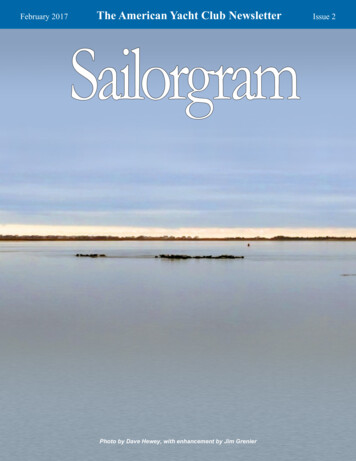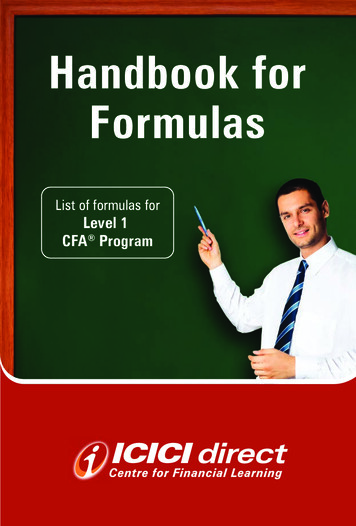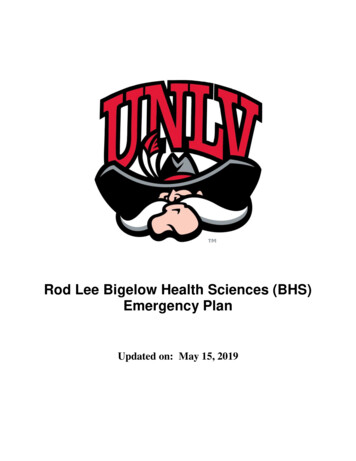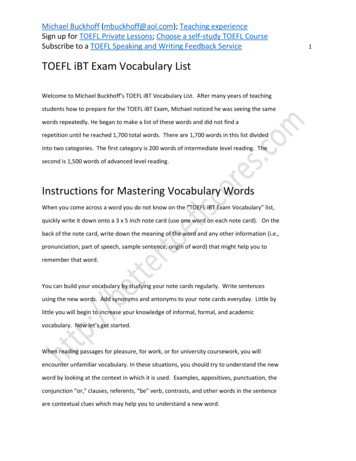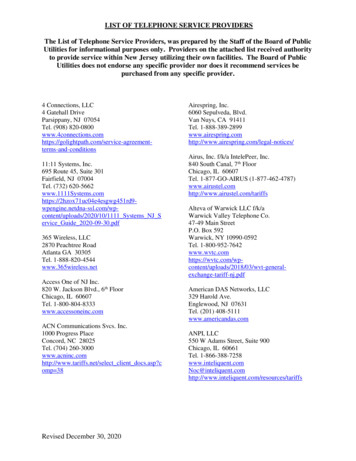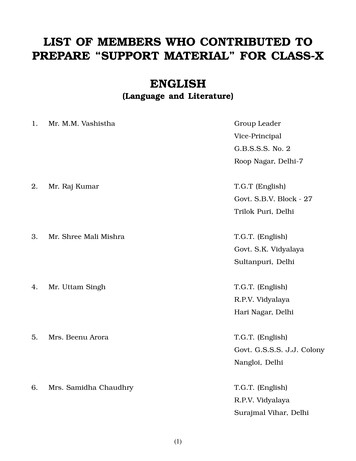
Transcription
LIST OF MEMBERS WHO CONTRIBUTED TOPREPARE “SUPPORT MATERIAL” FOR CLASS-XENGLISH(Language and Literature)1.Mr. M.M. VashisthaGroup LeaderVice-PrincipalG.B.S.S.S. No. 2Roop Nagar, Delhi-72.Mr. Raj KumarT.G.T (English)Govt. S.B.V. Block - 27Trilok Puri, Delhi3.Mr. Shree Mali MishraT.G.T. (English)Govt. S.K. VidyalayaSultanpuri, Delhi4.Mr. Uttam SinghT.G.T. (English)R.P.V. VidyalayaHari Nagar, Delhi5.Mrs. Beenu AroraT.G.T. (English)Govt. G.S.S.S. J.J. ColonyNangloi, Delhi6.Mrs. Samidha ChaudhryT.G.T. (English)R.P.V. VidyalayaSurajmal Vihar, Delhi(1)
IMPORTANT GUIDELINESContinuous and comprehensive Evaluatin (C.C.E.) refers to a system of school based evaluationof students that cover all aspects of student’s development. The “Support Materials’ is prepared keepingin view the C.C.E. and its pattern matches the examination pattern in letter nos. are given in thebeginning of the context and the same type of questions will be asked in the same order. This will helpthe students practise on the examination pattern. The student will concert with flying colours.“DIVISION OF MARKS” (Term-Wise)Term - I (April to September)Summative Assessment - ISectionReadingWritingGrammarLiteratureFormation Assessment - I & II —: Marks: 15: 15: 15: 3520%TotalTotal Weightage Assigned20%40%Term II (October to March)Summative Assessment - IISectionReadingWritingGrammarLiteratureFormation Assessment - III & IV: Marks: 15: 15: 15: 35— 20%TotalTotal Weightage Assigned40%60%Note : - The weightage assigned to Aummative Assessment I & II is to sixty marks and the weightageassigned to Formative Assessement I, II, III & IV is forty marks.Best of Luck !Group Leader and Member of Team(2)
English - Language And LiteratureCode No. : 184Examination SpecificationsClass - XSection A : READING15 Marks30 periodsQs.1-3 Three Unseen Passages of total 500 words followed by 15 marks Multiple Choice Questions of 1mark each, Out of the 15 marks, 3 marks will be for vocabulary. The questions will test inference,evaluation, and analysis. The passage may be extracts from poetry / factual / discursive passage.Section B : WRITING15 marks40 periods4.Letter Writing : One out of two letters (formal / informal / email) in not more than 100 wordsbased on verbal stimulus and context period.Type of letter : Informal - personal such as to family and friends.Formal - letter to the Editor.Email - formal letters to Principal of the school or to the Editor of a Newpaper or a Magazine.6 marks5.Writing an article, speech or debate based on visual or verbal stimulus in not more than 120 words(one out of two).(6 marks)6.Writing a short composition in the form of the dialogue writing / story or report of minimum 60words (One out of two).3 marksSection C : GRAMMAR15 marks45 periodsThis section will assess grammar items in context for 15 marks. It will carry 5 questions of 3 marks each.(3)
Qs7-11 A variety of short questions involving the use of particular structures within a context. Test typesused will include gap-filling, sentence-completion, sentence-reordering, dialogue-completion andsentence- transformation (including combining sentences). The Grammar syllabus will include thefollowing areas in class X :1.Tenses2.Modas (have to / had to, must, should, need, ought to and their negative forms)3.Use of passive voice4.Subject-verb concord5.Reportingi)Commands and requestsii)Statementsiii) Questions6.Clauses :iv)Noun clausesv)Adverb clauses of condition and timevi)Relative clauses7.Determiners8.PrepositionsNote : No separate marks are allotted for any of the grammatical items listed above.All questions will be multiple choice questions. The questions will be based on a sample of grammaritems taught in class X.Section D : TEXT BOOKS35 marks95 periodsFirst Flight - NCERT Text Book for Class - X25 marks12.Two reference to context Multiple Choice Questions from Prose / Play. Upto one mark in eachextract will be for vocabulary, at least one question will be used for testing local and globalcomprehension besides a question on interpretation.4 2 8 marks13.Two out of three references to context stanzas from a poem followed by 3 Multiple Choice Questionsto test local and global comrehension of the set text.3 2 6 marks14.Three out of four Short Answer questions based on Prose or Play to test local and global comprehension,theme and ideas. (40-50 words).3 2 6 marks15.One out of two Long Answer questions extrapolative in nature, based on Prose or Play (Minimum 80words).5 marks(4)
Footprints without Feet : NCERT Supplementary Reader for Class X16.10 marksOne out of Two Long Answer Questions from Supplementary Reader to interpret, evaluate andanalyse character, plot or situations occurring in the lessons to be answered in about 80 words.4 marks17.Two out of three Short Answer Type Questions based on factual aspects, interpretation or evaluationof lessons (40 - 50 words)3 2 6 marksPrescribed Books1.First Flight - Textbook for Class XPublished by NCERT2.Foot Print without Feet - Supplementary Reader for Class X Published by NCERTReading Section :Reading for comprehension, critical evaluation, inference and analysis is a skill to be tested formatively aswell as summatively.Writing Section :All types of short and extended writing tasks will be dealt with in both I and II Term Summative as well as inFormative Assessment.Grammar :Grammar items mentioned in the syllabus will be taught and assessed formatively over a period of time.There will be no division of syllabus for Grammar in the summative assessments for the two terms.Syllabus for Ist TermLiterature Reader (First Flight)PROSE1.A Letter of God2.Nelson Mandela : Long Walk to Freedom3.(i) His First Flight(ii) Black Aeroplane4.From the Diary of Anne Frank5.Hundred Dresses - I6.Hundred Dresses - IIPOETRY1.Dust of Snow : Fire and Ice(5)
2.A Tiger in the Zoo3.How to tell Wild Animals4.The Ball PoemSupplementary Reader (Footprints without Feet)1.A Triumph of Surgery2.The Thief’s Story3.The Midnight Visitor4.A Question of Trust5.Foot Prints without FeetSyllabus for IInd Term(October to March)Literature Reader (First Flight)7.Glimpses of Indiai) A Baker from Goaii) Coorgiii) Tea from Assam8.Mijbil the Otter9.Madam Rides the Bus10.The Sermon at Benaras11.The ProposalPOETRY5.Amanda6.Animals7.The Trees8.Fog9.The Tale of Custard the Dragon10.For Anne GregorySupplementary Reader (Footprints without Feet)6.The Making of a scientist7.The Necklace8.The Hack-Driver9.Bholi10.The Book That Saved the Earth(6)
Section A : ReadingTopice : Unseen Comprehension passages : (3)Q. No.1150 words5 marksQ. No. 2200 words5 marksQ. No. 3150 words5 marksThree unseen passages of total 500 words (150 200 150 words) with a variety of questions. The passageswill be facutal, discursive and literary in nature.The questions are meant to test your comprehension ability and understanding. Full credit is given for thecorrect value point / points and you should try to give the relevant value point without adding extra matter.Instruction :Read the following passage carefully and answer the questions by writing the option that you consider themost appropriate in your answer sheet :Passage : 1DANCEDance is an art form that generally refers to movement of the body, usually rhythmic and to music, usedas a form of expression, social interaction or presented in a spiritual or performance setting.Gymnastics, figure skating and synchronized swimming are sports that incorporate dance, while martialarts Kata are often compared to dances. Motion in ordinarily inanimate objects may also be described asdances (the leaves dance in the wind).Every dance no matter what style, has something in common. It not only involves flexibility and bodymovement, but also physics. If the proper physics is not taken into consideration injuries may occur.Choreography is the art of creating dances. The person who creates (i.e. choreographs) a dance isknown as the choreographer.Dance has certainly been an important part of ceremony, rituals, celebrations and entertainment sincethe birth of the earliest human civilizations. Archeology delivers trace of dance from prehistoric times such asthe 9,000 years old Rock Shelters of Bhimbetka painting in India and Egyptian tomb painting depictingdancing figures from circa 3300 BC.Once of the earliest structured uses of dances may have been in the performance and in the telling ofmyths. Before the production of written languages dance was one of the methods of passing these storiesdown from generation to generation.(7)
Questions :1.2.3.4.5.An art form in which people move is called umorouslyWhile writing in a poetic mood, the writer may use the word dance to describe the of someobject.a)movementb)beautyc)rhythmd)velocityTo avoid being hurt one should consider the of object and its movements while dancing.a)flexibilityb)stylec)physicsd)body movementBefore the script of writing was produced, dance used to be a from one generation to another.a)mode of passing informationb)mode of passing storiesc)mode of sharing experiencesd)mode of narrating events.A word in the passage which means the same as lifeless ge : 2THE BUS UNCLEThe Bus Uncle is a video clip of a quarrel between two men aboard a bus in Hong Kong on 27th April2006. The older man, who came to be nicknamed the Bus Uncle, scolded the man seated behind him, anearby passenger used his camera phone to record the entire incident. The resulting six minute video wasuploaded to the Google Video. The clip became the most viewed video in May 2006.The video became a cultural sensation in Hong Kong, inspiring vigorous debate and discussion onlifestyle, etiquette, civic awareness and media ethics within the city, eventually attracting the attention of themedia around the world.The incident took place in a Kowloon Motor Bus route 68X bus en-route to Yuen Long.(8)
The video was shot by a 21-year-old accountant and part-time psychology student. The “Bus Uncle”title for the video was coined by members of an Internet forum in reference to the older man.Questions :1.2.3.4.5.In Hong Kong while travelling in a bus two men had a serious .a)discussionb)argumentc)quarreld)meetingOf all the persons involved in the incident came to be Known as the Bus Uncle.a)the younger oneb)the older onec)the photographerd)the journalistSeeing the heated argument between the two gentlemen, a young man recorded the incident on his.a)camerab)handycamc)mobiled)vedio recorderWhen the video was uploaded on the website of Google, it because it arousedgreat debates and discussions on various social issues.a)was criticizedb)became a sensationc)was appreciatedd)was abandonedA word in the passage which means the same a ‘with a lot of energy is .a)intenseb)vigorousc)inspiringd)culturalPassage : 3REMINISCENCEI set out on a difficult pathFull of confidence and hope,Unmindful of the stonesStrewn on my path .The long and winding path(9)
Reminded me of my journey ahead,I could feel my strength ebbing away,Yet I felt, with anythingI could cope.Then emerged a saviourFrom the depth of gloom,As on an inky-black night,Shines radiantly, the moon.Infusing new spirit in meDispelling my gloom.A little sympathy.A little encouragement.Refreshed my tired soul.Expecting nothing in return,The stranger faded away.Memories still, gentlyReprimand me.Not even a simple ‘Thank You’Could you say?I extend a silent gratitudeTo this epitome of kindness, so rareWho found the timeAnd compassionTo show and say, “I care!”Questions :1.2.When the poet began his journey, he was not aware of the that he would experience inlater henever he felt that he had lost his strength, he himself with the thought that he couldadjust with gthened(10)
3.4.5.The stranger appeared from the depth of gloom and the poet.a)helpedb)savedc)troubledd)motivatedAs a reward for his helpful deed, the stranger expected .a)somethingb)a lotc)nothingd)many thingsA word in the passage which means the same as ‘to make a feeling dingPassage : 4A DARK NIGHT IT WAS .A dark, grim night it wasFilled with short sharp barksI heard the yelping dogsSome leaves rustled in the dark.Slowly and softly the wind blewI felt the night was gripping me.The sky was of sombre grey hueI wanted to set myself free.I heard a song from somewherePerhaps a distant hillBut tightly I closed my earsThe sweet voice had a frightening feel.I suffered till I saw the lightThe first ray of the morning sunIt wiped all fears of the previous nightNo more did I want to run.(11)
The morning brought delightHappiness and hope for meAll doubts were far from sightThe gripping fear had set me free.Questions :1.2.3.4.5.The rustling of leaves and yelping of dogs added to the note of the dark night.a)tenseb)depressingc)joyousd)frighteningThe poet felt bound in the shackles of .a)darknessb)sadnessc)lonlinessd)sombrenessThe of sun shed away all the fears of the poet.a)dawnb)lightc)raysd)brightnessThe morning brought joy and in the mind of the poet.a)happinessb)excitementc)hoped)pleasureA word in the passage which means the same as ‘colour’.a)rayb)huec)paled)greyPassage : 5HAPPINESSWhat do you mean by happiness?It means ‘love’ more and ‘scoldings’ less!Did you ever think howHappiness can be bought?(12)
Not by money but by sharingIt can be sought.Do you know where happiness is stored?Not in trunks but in the heart it is stored.How did one get it, find it or receive it?By sharing, caring andLoving everybody a bit.Why did the beggar smile that day?The kindness of the strangerMade him gay.Why does the sun shine everyday?For the love of the earthAnd her beauty we say.During danger why God do we call?Because he is the treasure of loveAnd cares for all.As a conclusion:What is happiness and love?That which is as sweetAnd soft as a dove!Questions :1.2.3.Happiness cannot be bought from anyone, rather it can be gained by things and ness can be kept safely in the of a person.a)trunkb)almirahc)heartd)mindSun feels happy after admiring the of the Earth.a)loveb)beautyc)graced)lustre(13)
4.5.At the time of need, we remember God, as he .a)is Almightyb)is full of lovec)has power and strengthd)has love and affection for all.A word from the passage which is antonymn of sad.a)lovingb)soft.c)gayd)cryingPassage : 6KINDNESS OR MONEY?Aneesha AluwaliaI was starving here.Looking for foodEverywhere.Nobody to help,To listen to my yelp.Then came byA man withA big tie.A genious man andRich too.He gave me a pennyOr two.I ate the food.Thanked the manAnd returned himHis good.Again came the daysSo dark,Not even one couldhear dog’s bark.I met a man,Perhaps there was(14)
Only one like him,Perhaps he wasBorn like that.He cared for meWhole day and night,Till I was all right.I don’t know howTo repay his kindness,How to say ‘thanks’.But not I know thatHearts of kindness areBigger than money banks.Questions :1.2.3.4.The poet cried helplessly as he was feeling verya)hurtb)hungryc)upsetd)painedThe poet the goodness of the rich man who gave him food by thanking him.a)returnedb)repaidc)acknowledgedd)acceptedThe second man helped the poet by taking care of him when he .a)needed moneyb)needed helpc)he was upsetd)he was unwellThe difference between the men who helped the poet was that one had big money bank but the otherhad aa)small money bankb)bigger money bankc)big heartd)bigger heart(15)
5.A word in the passage which is antonymn of ‘cruelty’ isa)generosityb)kindnessc)caredd)good.Passage : 7RANGOLIAn ancient Indian art form, Rangoli is drawn at the entrance to usher in peace and prosperity. These areintricate patterns drawn in the courtyard or just outside the threshold of the entrance door to ward off evilspirits. Rangolis are believed to make the surroundings aesthetic and auspicious.The name, Rangoli, is a combination of two words - rang and avalli which means a row of colours.When you mention the word, Rangoli, what come to mind are colourful geometric patterns as these aregreatly favoured all over. Many Rangoli books promote these designs exclusively. The Kolam is usually linepatterns in white, with a bit of spot colour provided by kumkum (vermillion) and haldi (turmeric). These areunbroken lines, as it was believed that the absence of gaps left no room for the evil spirits to enter. Today, ofcourse, any line drawing or even freehand off as Rangoli.The recurrent motifs in Rangolis across the states are inspired by nature and feature leaves (peepal),frutis (coconut and mangoes) and flowers (lotus). Religious symbols like swastika and aum also figure in thedesigns.While the ritual of Rangoli has faded from the modern-day home. It is been replaced by a larger-thanlife form for mass consumption. Instead of powders, flower petals or grains and pulses are used to fill giantsize Rangolis at hotels and wedding venues, Moulds with punched holes for intricate and detailed design areavailable in the market, you just have to fill them with powder and let it filter through Rangoli stickers arequite a rage and the fact that they have some permanency seems to act in their favour.Questions :1.2.3.Rangolis not only look beautiful but also make the environment .a)welcomingb)cleanc)piousd)elegantKolam is the rangoli drawn in and coloured with vermillion and turmeric.a)redb)yellowc)whited)linesThere are no gaps in the lines of Rangoli as it .a)invites good spiritsb)Stops the exit of good spiritsc)pushes away evil spiritsd)stops the entry of evil spirits.(16)
4.5.Rangoli stickers have become common these days because of easy application and quality.a)intricateb)long lastingc)attractived)colourfulA word in the passage which means the same as ‘concerned with beauty and ulPassage : 8BLOGS — USES AND MISUSESBlogs, online versions of personal diaries, have been a craze for quite sometime now. Some of us,before the Internet age, used to maintain a small diary to jot down random thoughts, reflections, sayings,poems, and other such stuff. Their online versions, however, are much more than that.The biggest difference between a blog and a personal diary is that while the latter was a very privateaffair accessible not even to family members, a blog is a public account, In fact the whole world connected tothe internet gets to read its contents if they come across it.What blogger should keep in mind while blogging is that by displaying our thoughts, emotions, opinionsand personal life in full public glory, we are revealing a part of our private life. We are giving outsiders,strangers, friends, collegues, and relatives a full view of what’s happening inside us and with out lives,something we would hesitate to do in real life. Once blogging begins, it’s difficult to control, and we end upsharing our personal thoughts and emotions that we would otherwise have kept to ourselves. The blogentices us, and we fall to be bait.Blogs don’t preserve our anonymity. They let us publish our pictures, professional and personal details,physical address and locations, etc. The biggest precaution to be observed therefore is to think twice beforepublishing anything, and ask oneself if one would like to make such matters public. The blog readers try tojudge us, understand us, get information about us, and take pleasure while peeping into our private liveswithout realising it.Questions :1.2.Blogs area)diariesb)personal diariesc)on line diariesd)official diariesEarlier the personal diaries were not available even to family members but blog can be read by .a)family and friendsb)friends onlyc)anyone who connects to the internetd)relatives(17)
3.4.5.Once we start bloggin, we get swayed away anda)share our personal feelingsb)comment mindlesslyc)share our thoughtsd)compliment others.While blogging the writers should be careful as the readers .a)compliment themb)judge themc)annoy themd)make fun of themA word from the passage which means the same as ‘the state of remaining sure.Passage : 9How do we resist change? We tend to respond to change the same way we respond to anything weperceive as a threat : by flight or fight. Our first reaction is flight - we try to avoid change if we can. We dowhat futurist Faith Popcon calls ‘cocooning’ : We seal ourselves off from those around us and try to ignorewhat is happening. This can happen in the workplace just by being passive. We don’t volunteer for teams orcommittees; we don’t make suggestions, ask questions, or offer constructive criticism. But the changes aheadare inescapable. Those who “cocoon” themselves will be left behind.Even worse is to fight, to actively resist change. Resistance tactics might include negativity, destructivecriticism, and even sabotage.Take a different approach to change. Rejecting both alternatives of flight or flight, we seek a betteroption -- one that neither avoids change nor resists it, but harnesses and guides it. Change can be the meansto your goals, not a barrier to them.Both fight and flight are reactions to perceiving change as a threat. But if we can change our perceptions,we can avoid those reactions. An old proverb goes, “Every change brings an opportunity.” In other words,we must learn to see change as a means of achieving our goals, not a barrier preventing us from reachingthem.Questions :1.Any change is accepted as a ning(18)
2.3.4.5.The ‘flight’ reaction is to the change.a)run away fromb)welcomec)opposed)createThe fight reaction is to the change.a)run away fromb)welcomec)opposed)createChange should be accepted positively as they bring in he word ‘barrier’ in the passage means .a)obstacleb)bridgec)barricaded)destructionPassage : 10The history of literature really began long before man learned to write. Dancing was the earliest of thearts. Man danced for joy round his primitive camp fire after the defeat and slaughter of his enemy. He yelledand shouted as he danced and gradually the yells and shouts became coherent and caught the measure of thedance and thus the first war song was sung. As the idea of God developed prayers were framed. The songand prayer became traditional and were repeated from one generation to another, each generation addingsomething of its own.As man slowly grew more civilised he was compelled to invent some method of writing by three urgentnecessities. Then were certain things that it was dangerous to forget and which, therefore, had to be recorded.It was often necessary to communicate with persons who were some distance away and it was necessary toprotect one’s property by making tools cattle and so on, in some distinctive manner. So man taught himself towrite and having learned to write purely for utilitarian reasons he used this new method for preserving his warsongs and his prayers. Of course, among these ancient people, there were only a very few individual wholearned to write, and only a few could read what was written.Questions :1.Before man invented writing, .a)literature was passed on by word of mouthb)prayers were considered literature.c)literature was just singing and dancing.d)all of the above(19)
2.3.4.5.As for the war songs and prayers each generation, .a)added something of its own to the stock.b)blindly repeated the songs and prayers.c)composed its own songs and prayers.d)repeated what was handed down to it.The first war song .a)developed spontaneouslyb)c)was a song traditionally handed down d)was inspired by god.was composed by leading dancers.Man invented writing because he wanted to .a)write literatureb)to write war songc)to record and communicated)to be artistic.The word ‘measure’ in the context of the passage means .a)weightb)rhythmc)sized)quantityPassage : 11In terms of the total energy consumed by different sectors, the largest consumer is understandably theindustrial sector, which accounts for nearly half the total energy used in the country today. This is followed bythe transport sector which consumes about 25%, the household sector (about 14%) and the agriculturalsector. (about 9%). This last sector has shown considerable increase in energy used over the last four decades.Among the primary fuels, the relative proportion of coal has dropped from nearly 80% to 40% and that of oilhas gone up from 17% to 44% over the same period.Total energy consumption in India today is equivalent to 291 million tons of oil of which 26% comesfrom wood. On a per capita basis it works out to about one litre of oil per day, which is extremely low byinternational standards.The energy disparity between the urban and the rural population is at present as wide as betweennations on a worldwide scale. There is apparently a greater need to provide energy in the rural areas and toimprove the efficiency of energy use than merely to increase the national figures for energy consumptionlimiting its use to those who are getting the bulk share already.With the projected rate of population growth, improving upon the per capital energy consumption is aHerculean task as our coal reserves and the capacity to import oil cannot be increased beyond a point. There(20)
is clearly no escape from the utilisation of renewable energy sources in a big way if the gap between thedesried levels of energy supply and available resources has to be kept at the minimum.Questions :1.2.3.4.5.Industrial sector is responsible for consuming of the total energy used in the country.a)one fourthb)one halfc)one tenthd)one fifthThe usage of coal has decreased over the years, but the oil has .a)remained constantb)decreasedc)increasedd)been unaffected.We need to focus on increasing energy consumption in rural areas as .a)they use energy extensivelyb)they don’t use energyc)they use quite less energy as compared to urban areasd)urban areas don’t leave energy for rural areas.Improving our per capita consumption of energy is difficult because population is increasing whereasresources are .a)increasingb)decreasingc)constantd)unaffectedA word in the passage which is the synonymn of projectedd)renewablePassage : 12Read the following passage carefully and complete the following sentences :Newspapers sell because of news and editorial coverage but it gets more revenue from advertisements.News costs money, while advertisements fetch money. The economics of modern newspapers is such that iscannot run by just selling news; it has to depend on advertisements. The economics of newspaper publishingrequires both subscribers who can afford to buy newspapers and business who can afford to advertise in it.(21)
The growth of the press depends on both. Therefore, in newspaper management neither aspect can be neglected.Co-ordination among the various departments - editorial, circulation, adverising and production - isvery essential for effective and better management. The head of various departments must be part of themanagament of a newspaper. They must be aware of the goals set, policies and future plans of the management.They cannot afford to remain cut off from the mainstream of management function. In addition, each departmentshould keep the other department managers informed of those of its activities that will be useful to them. Thisis a vital aspect of newspaper management.Questions :1.The growth of a newspaper depends on .2.Of the two aspects of newspaper, news is .3.is the most essential aspect of effective management.4.The heads of various departments should be .5.The word ‘goal’ in the passage means .Passage : 13Read the following passage carefully and complete the following sentences :When we are suddenly confronted with any terribe danger, the change of nature we undergo is equallygreat. In some cases fear paralyses us. Like animals we stand still, powerless to move a step in fright or to lifta hand in defence of our lives, and sometimes we are seized with panic, and again, act more like the inferioranimals than rational beings. On the other hand, frequently in cases of sudden extreme peril, which cannot beescaped by flight, and must be instantly faced, even the most timid men at once as if by miracle, becomepossessed of the necessary courage, sharp quick apprehension, and swift decision. This is a miracle verycommon in nature. Man and the inferior animals alike, when confronted with almost certain death ‘gatherresolution from despair’ but there can really be no trace of so debilitating a feeling in the person fighting, orprepared to fight for dear life. At such time the mind is clearer than it has ever been; the nerves are steel, thereis nothing felt but a wonderful strength and daring. Looking back at certain perilous moments in my own life,I remember them with a kind of joy, not that there was any joyful excitement then; but because they broughtme a new experience - a new nature, as it were and lifted me for a time above himself.Questions :1.When we face any danger, our reaction to this danger is .2.In one reaction to the danger, the person becomes and .3.In the other response to danger, people become and .4.One becomes more energetic than usual when
(3) English - Language And Literature Code No. : 184 Examination Specifications Class - X Section A : READING 15 Marks 30 periods Qs.1-3 Three Unseen Passages of total 500 words followed by 15 marks Multiple Choice Questions of 1 mark e


